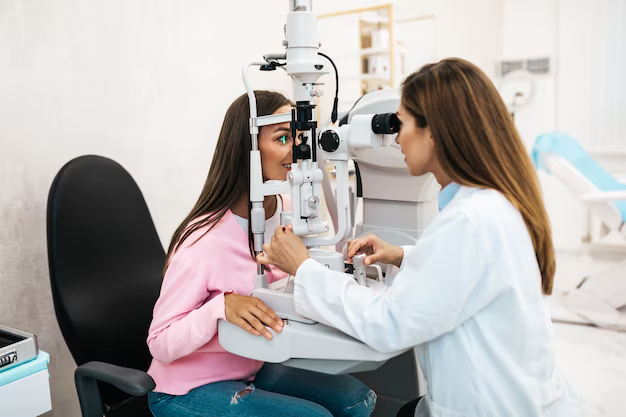Can Cataracts Come Back? Exploring the Possibilities and Answers
Imagine waking up one morning to find that your vision is not as clear as it once was. You might notice halos around lights or feel like a veil is over your eyes. These are common symptoms of cataracts, a condition that affects millions of people worldwide. Thankfully, modern medicine offers a tried-and-true solution: cataract surgery. But once you've had surgery, a pressing question often emerges: Can cataracts come back? This is a concern many people have, and it's essential to dive into the details to understand the possibilities, realities, and implications of cataracts post-surgery. Let's explore this topic thoroughly, unraveling the facts, myths, and significant insights.
🌟 Understanding Cataracts and Their Effects
What Are Cataracts?
Cataracts are a clouding of the eye's natural lens, which lies behind the iris and the pupil. This clouding leads to decreased vision, often described as looking through a fogged-up window. Cataracts are most commonly due to aging, but other factors like diabetes, smoking, and prolonged sun exposure can exacerbate the condition.
Symptoms to Watch For
- Blurry Vision: Commonly known as the hallmark of cataracts.
- Sensitivity to Light: Bright lights can be particularly bothersome.
- Halos Around Lights: Particularly noticeable at night.
- Double Vision: Especially when seen with one eye.
- Fading or Yellowing of Colors: This can dull your visual experience.
Why Cataracts Develop
The lens inside your eye works much like a camera lens, focusing light onto the retina for clear vision. Over time, proteins in the lens can clump together, forming a cloud that hampers this process. Age-related cataracts primarily affect individuals over the age of 40, gradually worsening as they age.
🩺 Cataract Surgery: The Go-To Solution
Types of Cataract Surgery
Phacoemulsification: Commonly referred to as "phaco," this involves using ultrasound energy to break up the clouded lens before removing it through a small incision.
Extracapsular Surgery: In this method, the cloudy lens is removed in one piece through a larger incision; this is less common today.
Both procedures replace the clouded lens with a clear artificial lens called an intraocular lens (IOL).
The Success of Surgery
Cataract surgery is one of the safest and most effective surgeries performed today. Many individuals experience significantly improved vision afterward, allowing them to resume activities with a clearer outlook.
🔍 Can a Cataract Return? The Big Question
Primary Cataracts: A One-Time Issue
Once a cataract-infected lens is removed during surgery, that particular cataract cannot return. The surgery effectively treats the cataract by replacing the cloudy lens with a clear artificial one.
Posterior Capsule Opacification (PCO)
However, the term "returning cataract" most often refers to a condition known as posterior capsule opacification (PCO). This occurs when the lens capsule holding the new IOL becomes cloudy, which can happen months or even years after surgery. PCO is sometimes called a "secondary cataract," though this name is misleading because it's not a real cataract.
Symptoms of PCO
- Blurry Vision: Similar to the original cataract symptoms.
- Glare and Halos: These effects can mimic initial cataract issues.
Treatment for PCO
The standard treatment for PCO is a quick, non-invasive laser procedure called YAG laser capsulotomy. This procedure involves using a laser to create an opening in the clouded capsule, restoring clear vision swiftly.
👨⚕️ Staying Informed: Prevention and Management
Regular Eye Exams
Routine eye examinations can help detect PCO early, alongside other eye issues. An optometrist or ophthalmologist can observe changes in the lens capsule over time, advising timely action.
Protection from UV Rays
Excessive exposure to ultraviolet light can affect eye health. Wearing sunglasses or UV-protective eyewear can help reduce oxidative stress on the eyes.
Maintaining a Healthy Lifestyle
A diet rich in antioxidants, regular exercise, and avoiding smoking can contribute to better eye health and potentially slow the formation of cataracts or PCO.
💡 Key Takeaways and Insights
Here's a quick summary of essential points about cataracts and their post-surgery management:
- Cataracts themselves do not return once removed during surgery.
- PCO (Secondary Cataracts) are common and occur when the lens capsule becomes cloudy.
- YAG Laser Capsulotomy is a quick fix for PCO, restoring vision effectively.
- Routine eye check-ups ensure eye health and early detection of any issues.
- Lifestyle choices, including a healthy diet and UV protection, contribute to long-term ocular wellness.
🚀 Eye Health Tips: Keeping Your Vision Clear
- 👓 Wear sunglasses: Protects against UV rays and reduces eye strain.
- 🥗 Eat a balanced diet: Rich in greens, fruits, and omega-3 fatty acids.
- 💧 Stay hydrated: Important for your overall and ocular health.
- 🚶♂️ Regular exercise: Beneficial for maintaining blood flow and reducing systemic oxidative stress.
Closing Thoughts: Looking Ahead
Cataracts can indeed be a significant life challenge; however, thanks to modern surgical interventions, they are highly manageable. Understanding that a cataract cannot return once removed should offer peace of mind. Yet, staying vigilant for PCO and adopting a proactive approach to eye health ensures that you not only enjoy clear vision post-surgery but also maintain it for years to come. If you're concerned about your eye health or experiencing any changes in vision, consulting with an eye care professional is always the best course of action. Stay informed, stay proactive, and keep seeing the world in all its clarity and color.
